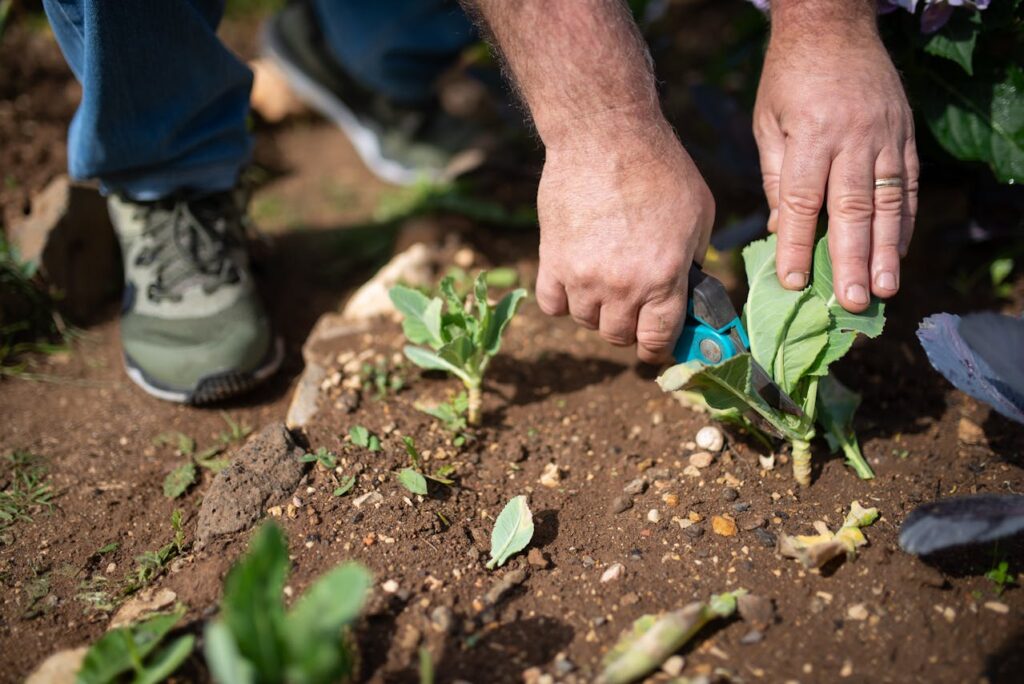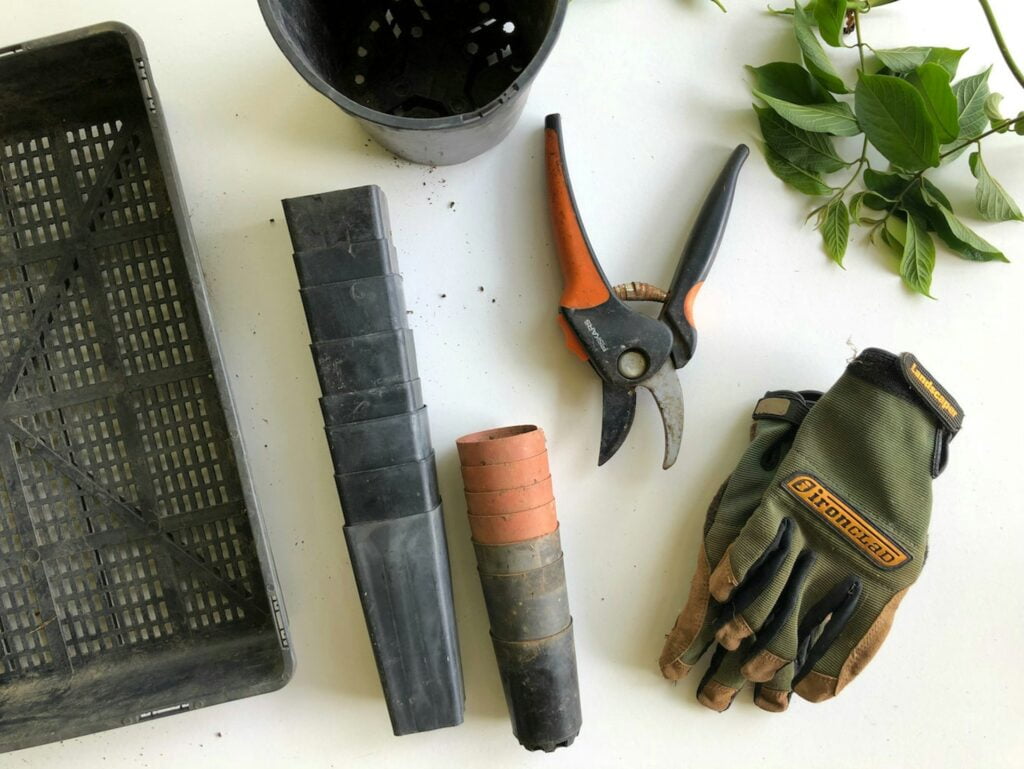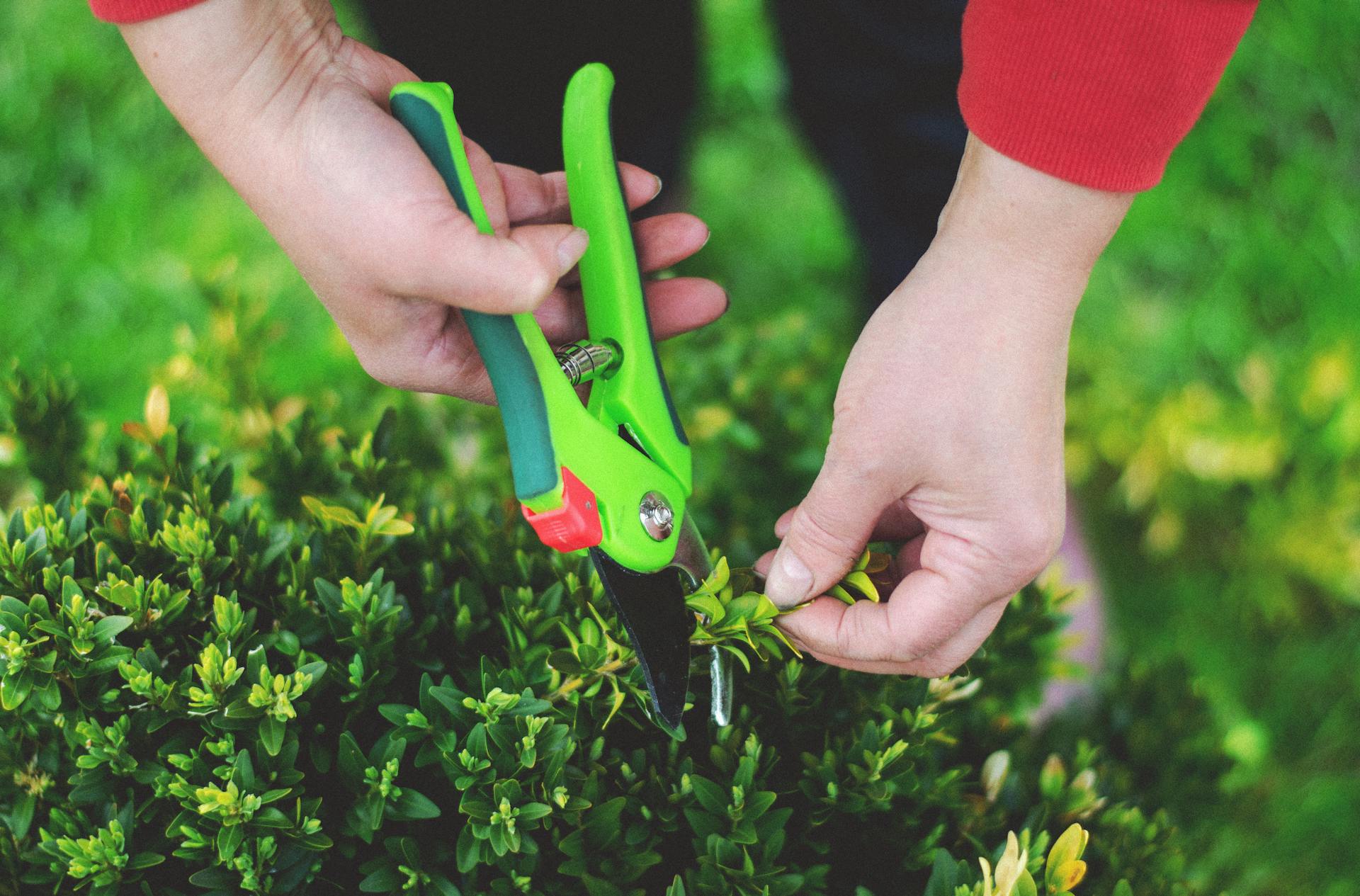Pruning shears, also known as hand pruners or secateurs, play a pivotal role in maintaining the health and aesthetics of plants. These versatile tools come in various types and materials, each offering unique benefits for gardeners and landscapers.
In this detailed guide, we will explore the intricacies of pruning shears, delving into their types, materials, benefits, maintenance, and availability in the market.
What is Pruning?
Pruning is a horticultural practice involving the selective removal of plant parts such as branches, leaves, or buds. It is a strategic and deliberate process aimed at enhancing the overall well-being and appearance of plants.
Pruning serves various purposes, including promoting healthy growth, controlling plant size and shape, removing dead or diseased material, and encouraging the development of flowers or fruit. This practice is essential for maintaining the vitality and aesthetics of gardens and landscapes.
What are Pruning Shears?
Pruning shears, also known as secateurs, are handheld cutting tools designed for the precise and controlled trimming of plants. Equipped with sharp blades, these shears come in different types, allowing gardeners to make clean cuts tailored to specific pruning needs.

The versatility of pruning shears makes them an essential tool for shaping hedges, trimming flowers, and maintaining the overall health of plants.
Types of Pruning Shears
The diverse array of pruning shears available caters to various tasks, each designed to meet specific cutting needs.
From the precision of bypass pruners to the power of anvil pruners and the incremental cutting of ratchet pruners, understanding the types of pruning shears is essential for gardeners seeking to elevate their pruning game.
In this section, we will delve into the characteristics and applications of different types of pruning shears, providing insights to help you make informed choices for your specific gardening requirements.
Bypass Pruners
Bypass pruners are a popular choice among gardeners for their precision cutting capabilities. These shears feature two curved blades that pass by each other, creating a clean and precise cut.
They are particularly well-suited for live plants and green stems, making them an ideal choice for tasks that require accuracy and finesse.
Bypass pruners are an essential tool for shaping hedges, trimming flowers, and maintaining the overall health of plants.
Anvil Pruners
Anvil pruners, characterized by a single straight blade that cuts against a flat edge, are known for their power and efficiency.
These pruners are excellent for cutting dead or woody stems, providing the necessary force to tackle tougher branches.
However, users must exercise caution, as anvil pruners have the potential to crush live stems if not used carefully. Gardeners often rely on these shears for tasks that demand a bit more strength and cutting power.
Ratchet Pruners
Ratchet pruners feature a unique mechanism that allows users to cut in stages, providing incremental cutting power.
This makes them an excellent choice for individuals with limited hand strength or those dealing with thicker branches.
The ratcheting action of these shears enables users to make a series of smaller cuts, gradually increasing the force applied with each step. This feature makes ratchet pruners a versatile tool for a variety of pruning tasks, especially when dealing with challenging cutting conditions.
Materials Used in Pruning Shears
The effectiveness and durability of pruning shears rely significantly on the materials used in their construction. Gardeners and landscapers understand that the right choice of materials can make a substantial difference in the performance and longevity of these essential tools.
From classic steel with its renowned durability to stainless steel offering rust resistance, and lightweight titanium providing ease of use, the materials used in pruning shears play a crucial role.
In this section, we will explore the various materials employed in crafting pruning shears, offering insights into their unique properties and helping you make informed decisions when selecting the perfect pruning tool for your gardening endeavors.
Steel
Steel remains a classic choice for pruning shears, valued for its durability and sharpness. The quality of steel can vary, with high-carbon steel being a preferred option for its ability to retain a sharp edge over time.
Steel pruning shears are reliable and can withstand rigorous use, making them a staple for both amateur and professional gardeners.
Stainless Steel
Stainless steel has gained popularity in the manufacturing of pruning shears due to its resistance to rust and corrosion. This material ensures that the shears remain in top condition even when exposed to various weather conditions.
Stainless steel blades offer a sharp and clean cut, making them a reliable choice for gardeners who seek a low-maintenance option without compromising cutting performance.
Titanium
Titanium pruning shears combine strength with lightweight properties, making them an attractive option for gardeners who prioritize ease of use. Titanium is resistant to corrosion, ensuring that the shears maintain their structural integrity over time.
The lightweight nature of titanium shears reduces fatigue during prolonged use, providing a comfortable and efficient pruning experience.
Benefits of Using Pruning Shears
The benefits of using pruning shears extend far beyond the act of trimming branches. Precision, enhanced aesthetics, increased productivity, and versatility are just a glimpse into the advantages these tools bring to the gardening table.

In this section, we will explore how they contribute to the overall health, beauty, and efficiency of your garden or landscape.
Promotes Plant Health
One of the primary benefits of using pruning shears is the ability to promote plant health through precise cuts.
Bypass pruners, in particular, make clean cuts that minimize damage to plants, allowing for optimal growth and development. By removing dead or diseased branches, gardeners can enhance the overall well-being of their plants.
Enhances Aesthetics
Pruning shears enable gardeners to shape plants with precision, enhancing the overall aesthetics of a garden or landscape. Bypass pruners are especially valuable for delicate tasks such as trimming flowers and shaping shrubs.
The ability to achieve clean and accurate cuts contributes to a well-groomed and visually appealing outdoor space.
Increased Productivity
Using pruning shears significantly increases productivity compared to manual methods like scissors. The efficiency and cutting power provided by anvil and ratchet pruners, in particular, allow gardeners to accomplish pruning tasks more quickly and with less effort.
This time-saving aspect is crucial for maintaining large gardens or landscapes.
Versatility
Pruning shears come in different types, catering to various pruning needs. Whether dealing with delicate flowers, live stems, or thicker branches, there is a specific type of pruning shear designed for the task at hand.
This versatility makes pruning shears an indispensable tool for gardeners with diverse plant varieties in their care.
Are garden shears and pruning shears the same?
While the terms “garden shears” and “pruning shears” are often used interchangeably, there are subtle differences between the two.
Garden shears, in a broader sense, encompass a variety of cutting tools used in gardening, including hedge shears, grass shears, and pruning shears.
Pruning shears, on the other hand, specifically refer to handheld cutting tools designed for the precise pruning of plants.
While both garden and pruning shears serve the purpose of trimming and shaping, pruning shears are more specialized, offering a finer level of control for detailed and precision cuts.
Garden shears, in contrast, may include a broader range of tools catering to different cutting needs within the garden.
Maintenance Tips
Regular Cleaning
To ensure the longevity of pruning shears, it’s essential to clean them regularly. Remove sap, debris, and any residue from the blades after each use to prevent blade stickiness.
A simple wipe with a damp cloth or brush can suffice, but for stubborn residues, a mild solvent or soap solution can be used.
Sharpening Blades
Sharp blades are crucial for achieving clean cuts. Regularly sharpen the blades using a sharpening tool or, for those less comfortable with the process, consider professional sharpening services.
Dull blades can crush and damage plant tissue, negating the benefits of using pruning shears.
Oil and Lubrication
Pruning shears have moving parts that require proper lubrication to prevent rust and ensure smooth operation. Apply oil to the pivot and other moving parts regularly.
A light machine oil or specialized pruner oil can be used for this purpose. This simple maintenance step contributes to the overall performance and longevity of the shears.
Proper Storage
Store pruning shears in a dry place to prevent rusting. Consider investing in a tool organizer or sheath to keep the blades protected when not in use.
Proper storage not only safeguards the shears but also prevents accidents when handling or reaching for other tools in the garden shed.
Market Availability
Pruning shears are readily available in both physical stores and online, with numerous brands offering a variety of options to cater to different preferences and needs. Popular brands such as Fiskars, Felco, and Corona have established themselves as reliable choices for quality pruning shears.
Before making a purchase, it’s crucial to consider factors such as cutting capacity, handle design, and overall build quality.
Conclusion
Pruning shears stand as indispensable tools for gardeners and landscapers, facilitating the maintenance of healthy and visually appealing plants. The diverse types of pruning shears, each designed for specific tasks, provide gardeners with the versatility needed to address various pruning needs.
Whether shaping delicate flowers, trimming shrubs, or tackling thicker branches, the right pruning shear ensures efficiency and precision.
Understanding the materials used in pruning shears allows gardeners to make informed choices based on factors like durability, rust resistance, and weight. Steel, stainless steel, and titanium each bring their unique advantages, catering to different preferences and gardening conditions.
Also Read: Copper Gardening Tools: A Durable and Aesthetic Choice
Well, what do you think about the article?
Did you enjoy reading this article? We really hope that you have enjoyed it. If you have any thoughts or comments about this post, please feel free to share them in the comment section below. We appreciate your feedback and would be glad to hear from you.
To see more content like this check the gardening section of Money For My Beer.

Lara is a freelance content writer and a cat mom to three furbabies, Mizu, Haru and Sora.
She graduated with a Bachelor’s Degree in Architecture and is a registered and licensed Architect. Aside from writing, she is fond of growing cacti and succulents and is a DIY type of girl.
During her free time, she engages herself in water-colouring and crocheting, while catching-up with an old tv series she just discovered. Lara loves to explore new places, but most of the time stays in her hometown province, reading historical romance novels over a cup of coffee – or matcha.

